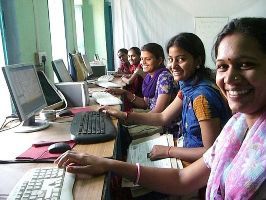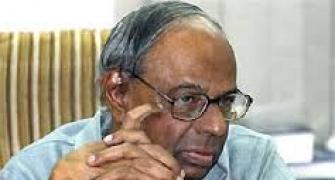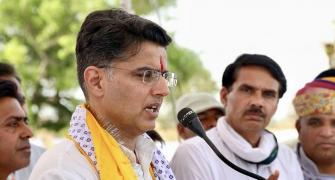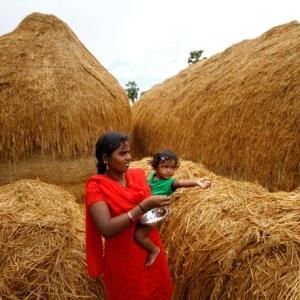 Only a quarter of India’s young girls and women (15-24 years old) contribute to any form of economic activity, latest Census 2011 data on workers in India reveals.
Only a quarter of India’s young girls and women (15-24 years old) contribute to any form of economic activity, latest Census 2011 data on workers in India reveals.
Data show 75 per cent of the girls in 2011 were those who did not contribute to any economic activity (termed as non-workers by Census) -- these could include students, those involved in household chores, beggars, or those not helping in even unpaid work in the family, etc.
In 2001, 70 per cent of young girls were not contributing to India’s Gross Domestic Product by any means.
In comparison, half the young boys (52 per cent) in 2011 were non-workers against 46.4 per cent a decade ago.
Experts cited this as a sign of prosperity, and said more young women are moving towards education and this trend is reflected in these numbers.
“This is more because of education. Usually, when a middle-class family becomes prosperous, they tend to withdraw female members from working. Over here, as the age group is 15-24, the reason could be education,” said S R Hashim, former member of Planning Commission.
Talking about the variation between young boys and girls in terms of their contribution to the Indian economy in 2011 (48 per cent and 25 per cent, respectively), Hashim said women are usually more involved in unpaid jobs.
“In India, it is seen that women are involved in household chores, which do not form part of any economic activity. Compared to this, boys are doing paid jobs, and, hence, there is a variation in that aspect,” Hashim said.
Pronab Sen, chairman of National Statistical Commission, said college enrollment among girls has seen a substantial increase.
“In 2004-05, it was 11-12 per cent, which has gone up to 19-20 per cent now.
"More children are going to college after passing out from school, rather than choosing to work.
"The enrollment, particularly among girls, went up at a better pace than boys in this phase,” Sen said.
At the national level, among youth, in 2011, 63 per cent of the total population were non-workers, against 57 per cent in 2001.
In absolute terms, 146 million youth were not contributors to any economic activity of the country, compared to 109 million a decade ago.
Among non-contributors, 26 per cent of young girls were studying in 2001, which went up to 32 per cent in 2011.
Among boys, 48.7 per cent of non-workers were pursuing education in 2001, and this figure rose to 56.3 per cent in 2011.
However, even as more girls pursued education, a marginal proportion also went towards performing household duties.
Among girls, those involved in household activities constituted 36.5 per cent in 2011, up from 35.7 per cent in 2001.
THE YOUTH IN NUMBERS
- 75% young girls (in 15-24 age group) were non-workers (not part of economic activity) in 2011, compared to 70% in 2001
- Experts said this trend reflected that more girls were pursuing education
- 52% of young boys in 2011 were non-workers, against 46.4% a decade ago
- 146 million youths did not contribute to economic activity in 2011, against 109 million in 2001
- However, non-working females performing household activity went up to 36.5% in 2011, compared to 35.7% in 2001
The image is used for representational purpose only










.jpg)